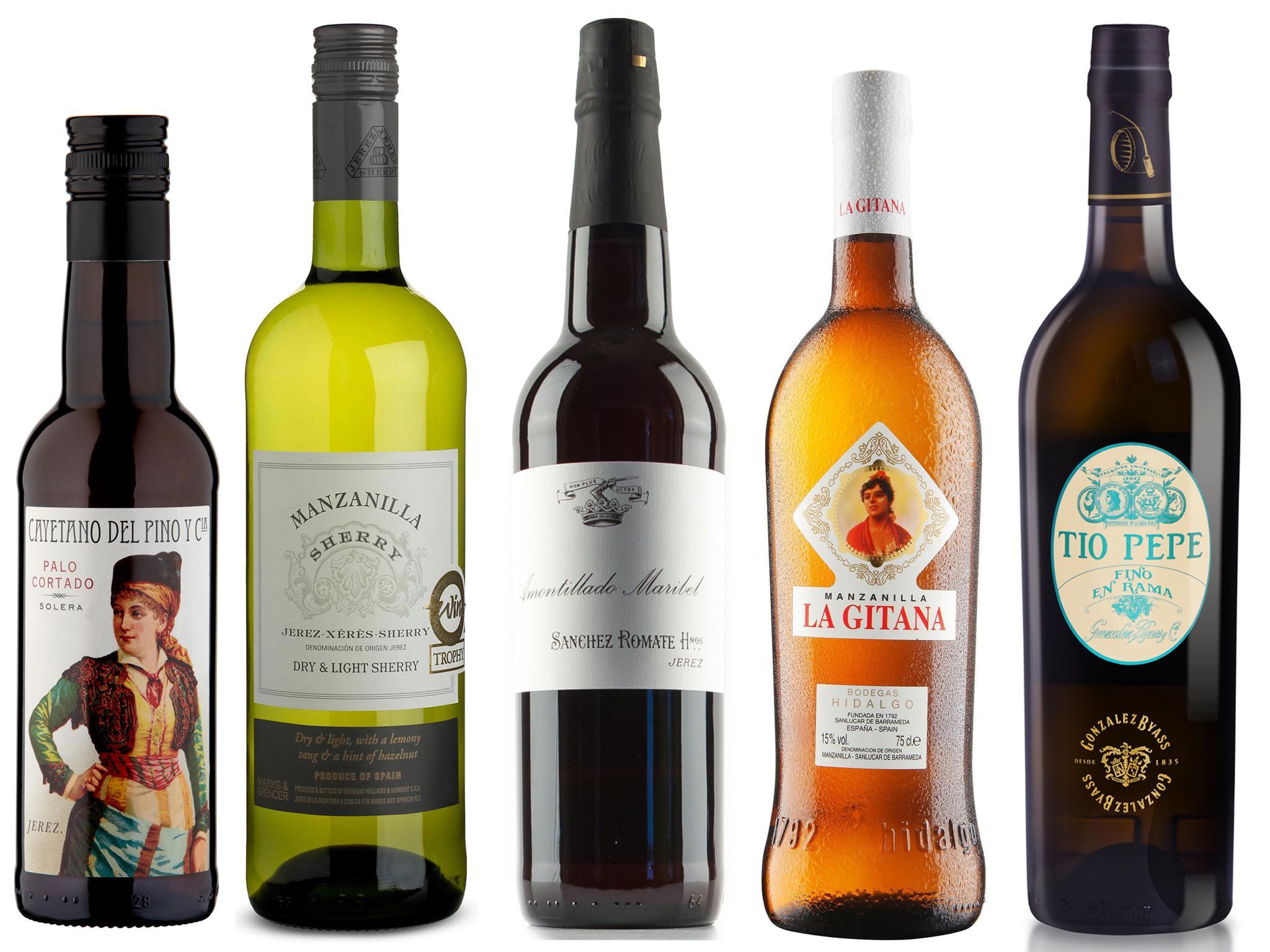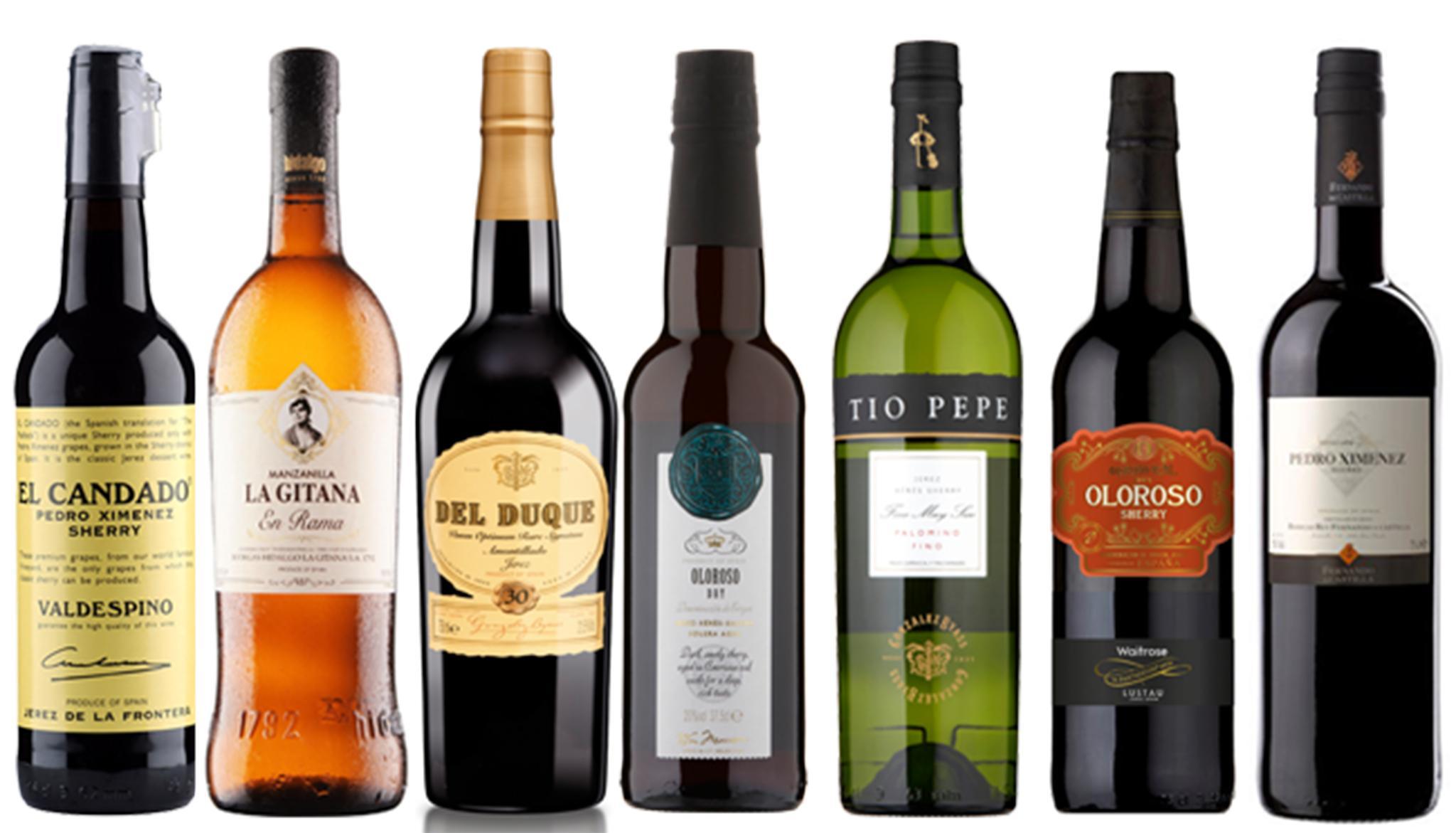The Independent's journalism is supported by our readers. When you purchase through links on our site, we may earn commission.
Twelve bottles for International Sherry Week
Sherry’s astonishing range of flavour means that some of the driest and sweetest of all wines fall in this category. Terry Kirby gets beneath the ‘flor’ to bring you 12 fantastic finds

“A good sherris sack hath a twofold operation in it. It ascends you into the brain, dries you there all the foolish and dull and curdy vapours which environ it; makes it apprehensive, quick, forgetive, full of nimble fiery and delectable shapes, which, delivered o’er to the voice, the tongue, which is the birth, becomes excellent wit. The second property of your excellent sherris is, the warming of the blood… the sherris warms it and makes it course from the inwards to the parts extreme: it illuminates the face, which as a beacon gives warning to all the rest of this little kingdom…’’
This eloquent tribute to sherry by Shakespeare’s great character Falstaff in the play Henry IV Part 11 reflects the fact that, when young Will arrived in London to start writing, the Elizabethan city was awash with the wine. Thousands of barrels had been brought home by Sir Francis Drake after ransacking the Spanish port of Cadiz, the outlet for a wine produced in the region since around the ninth century when the Moors invaded. It is one of dozens of references to sack or sherry in the plays.
And so, since it is it International Sherry Week from Monday, what better time to echo Falstaff’s celebration of the joys of sherry. It’s one of the great bargains of the wine world, as well as one of its greatest pleasures, which are being rediscovered by a new generation though the opening of sherry bars in some of our big cities and through its association with tapas dishes.
Much of the joy of sherry lies in its history, traditions and uniqueness: only made in a small area of southern Spain, it relies upon the development of a yeast called “flor” to give it the distinctive, oxidised flavour. Like port, it is fortified with clear spirit after fermentation, then aged in oak barrels in the intricate solera system whereby younger wines are used to top up older ones; the finished wine is therefore a complex fractional mixture of ages – for a fuller explanation, see here. Newcomers to sherry also quickly discover that it is not simply a dessert wine or aperitif – in fact there are more dry sherry styles than sweet ones and it is a magnificent food wine. What is also astonishing is that most dry sherries are made from a single grape variety: palomino, with another grape, pedro ximenez, responsible for the sweeter wines; a small number are also made from the sweet moscatel grape.

Now, the wines. Fino is the most simple and youthful of sherries: light, dry, clean and refreshing, it has nutty almond flavours, only a hint of yeast and should be drunk young and cold. Versatile, it is ideal with nuts or olives, but can accompany any canapes, smoked meats or fish, fried squid and paella. Tio Pepe Fino (£9-£10 widely available) is probably the most well known brand and seen on most supermarket shelves; don’t be put off by its ubiquity – it is massively better value than a lot of ordinary white wines at the same price bracket and serves much the same purposes. Just sip, do not glug, and like all wines this will go off after a couple of days...
A recently added, limited edition sherry style is called en rama; a young wine drawn from the cask unfiltered, usually in the spring when the flor is at its peak: the taste is therefore both youthful and fresh, but more complex and yeasty and intended to be drunk as soon as possible after bottling, ideally within a few months. Some of the 2018 Tio Pepe En Rama (£14.95 thewinesociety.com; £16.99 majestic.co.uk, 37.5cl) is still available, but move fast if you want this treasure.
Manzanilla is an even drier style of fino that comes only from the coastal town of Sanlucar de Barrameda and derives its lemony, saline tang from the sea air. One of the best is Bodegas Hidalgo Manzanilla La Gitana, (£10.00 virginwine.co.uk; £10.99 waitrose.com; £8.00 sainsburys.co.uk, 500ml) with its distinctive, very Spanish label. There is also a more complex, chewy to start, clean and dry on the finish, en rama edition Bodegas Hidalgo Manzanilla La Gitana En Rama, (£16.99. virginwine.co.uk). A real bargain at M&S is the excellent Manzanilla Sherry (£8.00 marksandspencers.com) produced for it by the long established firm of Williams and Humbert. The label, shorn of mantilla-clad maidens, doesn’t quite do it justice, to say the least: light, lemony, nutty. All manzanillas are ideal with salty canapes and oily fish like anchovies, sardines and tuna.
Moving up the scale of sherries, the next is amontillado, which was probably the closest to Falstaff’s sack and which is made to be darker than fino, but still naturally dry, although some can have slightly sweet notes and all have complex flavours of nuts, caramel and toffee. At the off-dry end, try the Romate Maribel (£8.95 thewinesociety.com, 37.5ml) as a cooler weather aperitif and for something extra special, the average 30-year-old Del Duque Amontillado VORS (£19.75 ocado.com; £20.95 thewhiskyexchange.com, 37.5ml) with amazing, dry, intense layers of flavours of spices and dried fruits; the finish goes on forever; fantastic with hard cheeses like aged cheddar or manchego. Next, oloroso sherries are weightier than amontillados and tend to be the highest in alcohol, but are still dry and are perfect with canapes, roasted or cured meats or with strong cheeses, although they might also suit a lighter pudding. For an introduction, try the brilliant value, rich and dark Oloroso Dry (£6.00 morrisons.com, 37.5ml), previously recommended here and made by the highly reputable producer Emilio Lustau. Lustau is also the source of the award winning Jerezano Palo Cortado Lustau (£11.49 waitrose.com, 37.5ml); Palo Cortado being a rarer style that is somewhere between an oloroso and an amontillado and denotes wines which lose their flor in the early stages of maturing. I do hope you are keeping up. Again a full bodied, nutty/dried fruit richness prevails, with a dry, intense, long finish, making it ideal for hard cheeses or smoked meats. Try also the equally excellent, elegant, Cayetano del Pino Palo Cortado ( £12.50 for 75cl thewinesociety.com; normally £14.95; £10.99 for 37.5cl waitrose.com).
There is much less variation around the sweeter sherries, designed as dessert wines for all kinds of puddings at the end of a meal. When sun dried the pedro ximenez, or PX as it is known, grape produces the most astonishing, luscious, viscous, intense, almost black wines, with layers of very sweet flavours of dried figs, apricots and raisins. Usually aged for around 10 years, they are one of the very few wines that can match chocolate based desserts, while being unmatchable just poured over good vanilla ice cream; it is also one for Christmas puddings and cakes. Try the Fernando de Castilla Classic Pedro Ximenez (£15.89 allaboutwine.co.uk; £16.19 ndjohn.co.uk) or the even more concentrated Valdespino El Candado Pedro Ximenez (£19.22 thedrinkshop.com; £19.95 leaandsandeman.co.uk) from one of the oldest and most venerable sherry producers, in business for more than six centuries and very possibly the source of some of Drake’s booty.
Two final points: if you love Scotch whisky, remember many fine malts are aged in barrels that either once contained sherry or were seasoned by it, giving whisky some of its most distinctive aromas and flavours: Scotland owes sherry a massive debt. And, secondly, as Falstaff implies, they may not have needed Viagra in Elizabethan times because sherry warmed the blood, making it “course from the inwards to the parts extreme...’’
Join our commenting forum
Join thought-provoking conversations, follow other Independent readers and see their replies
Comments
Bookmark popover
Removed from bookmarks